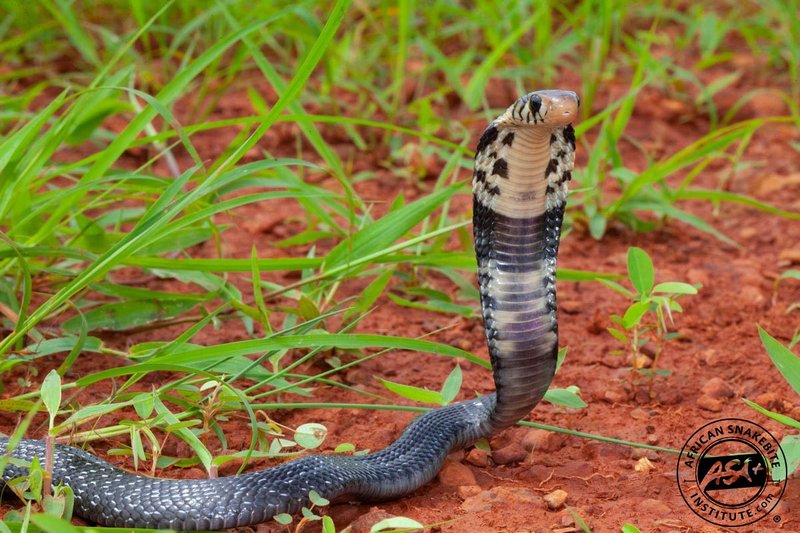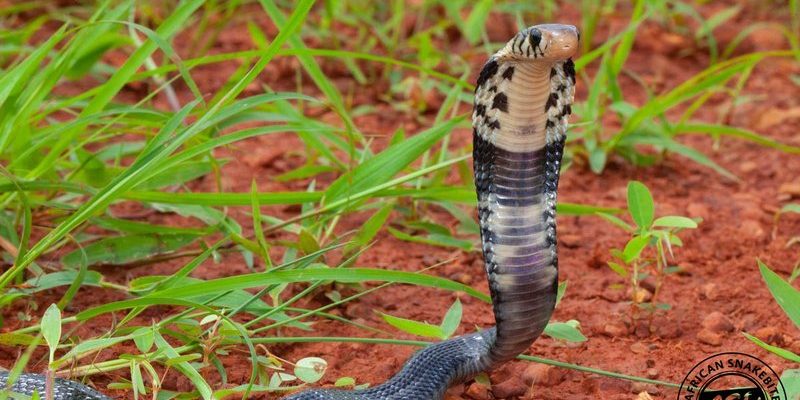
Imagine wandering through a lush, green forest where the air is thick with the scent of damp earth and vibrant flora. Among these towering trees and hidden paths, lives a fascinating creature—the Forest Cobra. Known for its striking appearance and elusive nature, this snake is a marvel of the animal kingdom. With its sleek body and unique hood, the Forest Cobra is not only a stunning sight but also an important predator in its ecosystem.
If you’ve ever been intrigued by the deep woods or the mysterious creatures that call it home, the Forest Cobra might just capture your imagination. It plays a critical role in controlling populations of small mammals and other reptiles, making it a valuable part of its habitat. Let’s dive deeper into what makes this snake so special.
Physical Characteristics
The Forest Cobra boasts some impressive physical traits that set it apart from other snakes. Typically, it can reach lengths of about 6 to 10 feet, with its slender, elongated body allowing for agile movements through dense vegetation. Its scales are glossy, ranging in color from deep browns to vibrant greens, providing excellent camouflage against the forest floor.
A distinctive feature of the Forest Cobra is its hood, which it can expand when threatened. This hood gives the snake a more impressive appearance, deterring potential predators and signaling to other animals that it’s not to be trifled with. The head of the Forest Cobra is slightly wider than its body, a design that aids in both hunting and self-defense.
In terms of sensory adaptations, the Forest Cobra has well-developed vision, which is crucial for spotting prey from a distance. Its forked tongue, a hallmark of many snakes, helps it to detect chemical cues in the environment, further enhancing its ability to hunt.
Habitat and Distribution
The Forest Cobra is primarily found in tropical rainforests across Africa and parts of Southeast Asia. These environments provide the perfect mix of moisture and cover, allowing the snake to thrive. Within these dense forests, they often inhabit areas near water sources, such as rivers and swamps, where prey is abundant.
Interestingly, the Forest Cobra is quite adaptable. While it prefers humid climates, it can also be found in varied landscapes, including plantations and secondary forests. However, it tends to avoid heavily urbanized areas, seeking out regions that still retain their natural vegetation and biodiversity.
The distribution of the Forest Cobra is closely linked to its prey. As skilled hunters, they rely on small mammals, birds, and other reptiles. This relationship emphasizes the interconnectedness of ecosystems and highlights the importance of maintaining healthy habitats for these snakes to flourish.
Diet and Hunting Behavior
The diet of the Forest Cobra is diverse, focusing mainly on small mammals, such as rodents, along with birds and sometimes other snakes. An exciting aspect of their hunting strategy is their ambush technique. They often lie in wait, perfectly camouflaged, until unsuspecting prey comes too close. With a quick, striking movement, the Forest Cobra will deliver a swift bite, injecting potent venom that subdues its target.
This venom is not just a tool for hunting; it also serves as a defense mechanism against larger predators. When threatened, the Forest Cobra can choose to either flee or confront danger with its striking display and venomous bite. This duality showcases the snake’s adaptability and intelligence in navigating the challenges of its environment.
After capturing its prey, the Forest Cobra uses its keen reflexes to consume it whole. The process can be quite efficient, allowing the snake to maximize its energy intake. This ability to quickly digest and assimilate nutrients is vital for survival, especially in the competitive landscape of the jungle.
Reproduction and Life Cycle
The mating behavior of the Forest Cobra is as fascinating as its physical traits. Mating typically occurs during the rainy season, when environmental conditions are favorable. Males will engage in elaborate courtship displays, showcasing their strength and vitality. This dance is crucial for attracting females, who will then choose their mates based on these traits.
Once mating occurs, the female Forest Cobra lays a clutch of eggs, often finding a hidden, secure location to protect them. The number of eggs can vary widely, but it’s common for a female to lay between 10 to 20 eggs. After laying, she provides no parental care, leaving the hatchlings to fend for themselves.
Behavior and Social Structure
The Forest Cobra is primarily a solitary creature, preferring to lead a life away from others of its kind. This solitary nature helps reduce competition for food and resources, allowing each snake to carve out its own territory. While they might cross paths during mating season, they generally keep to themselves for the rest of the year.
These snakes are primarily nocturnal, meaning they are most active during the night. This behavioral trait helps them avoid predators and humans, increasing their chances of survival. When the sun sets, they come alive, moving through the underbrush in search of prey.
While the Forest Cobra is not aggressive by nature, it will defend itself if it feels threatened. The intimidating display of its hood and a quick strike can be a sufficient warning to potential threats. This behavior is part of their survival toolkit, balancing the need for stealth and the instinct to protect themselves.
Conservation Status
As habitats continue to face threats from deforestation and human encroachment, the conservation status of the Forest Cobra is a growing concern. While it is not currently classified as endangered, its populations are at risk in certain areas due to habitat loss and poaching. The destruction of their forest homes can lead to significant declines in their numbers.
Conservation efforts focusing on habitat preservation and education about the importance of these snakes are crucial. Protecting the forests where the Forest Cobra lives not only helps this species but also supports the broader ecosystem, which relies on the balance of many interdependent species.
Community involvement plays a critical role in conservation. Educating local populations about the ecological value of the Forest Cobra and promoting sustainable practices can significantly impact its survival. By fostering respect for these magnificent creatures, we can help ensure they remain a part of the forest for generations to come.
Interesting Facts About the Forest Cobra
| Common Name: | Forest Cobra |
| Scientific Name: | Naja melanoleuca |
| Length: | 6 to 10 feet |
| Habitat: | Tropical rainforests |
| Diet: | Small mammals, birds, reptiles |
| Reproduction: | Oviparous (egg-laying) |
| Venom Type: | Neurotoxic |
The Forest Cobra is more than just a snake; it’s a vital component of its ecosystem and a stunning example of nature’s adaptability. From its mesmerizing appearance to its intriguing behaviors, this snake captivates our curiosity and reminds us of the wonders of the natural world. As we learn more about the Forest Cobra, we also uncover the importance of protecting its habitat and the many species that share its environment.
Next time you think of the Forest Cobra, remember its role as a hunter, a survivor, and a unique part of the rich tapestry of life in the forests. By understanding these creatures, we not only appreciate their beauty but also the delicate balance of nature they help maintain.
FAQ
What is the main habitat of the Forest Cobra?
The Forest Cobra primarily resides in tropical rainforests, where it can find ample cover and moisture. These snakes thrive in diverse environments, including areas close to rivers and swamps, which provide abundant food sources.
Are Forest Cobras aggressive towards humans?
Forest Cobras are generally not aggressive unless they feel threatened. They prefer to avoid conflict and will often use their impressive hood display as a warning. If cornered, however, they can strike quickly, delivering a potent venomous bite.
How does the Forest Cobra hunt?
The Forest Cobra uses an ambush strategy for hunting. It patiently waits for unsuspecting prey to come close and then strikes with incredible speed. This method allows it to capitalize on its camouflage and surprise its target.
What do Forest Cobras eat?
The diet of a Forest Cobra includes small mammals, birds, and other snakes. Their ability to adapt their hunting techniques to target various prey helps them thrive in their environment.
How long do Forest Cobras live?
In the wild, Forest Cobras can live for around 10 to 12 years, depending on environmental factors and threats. In captivity, with proper care, they may live longer, sometimes exceeding 15 years.
Are Forest Cobras endangered?
Currently, Forest Cobras are not considered endangered, but their populations are threatened by habitat destruction and poaching. Conservation efforts are crucial for their continued survival.
What adaptations help the Forest Cobra survive?
Numerous adaptations aid the Forest Cobra in survival, including their excellent camouflage, keen eyesight, and potent venom. These features allow them to hunt effectively and protect themselves from potential threats.
Do Forest Cobras have any natural predators?
While adult Forest Cobras have few natural predators due to their size and venom, young snakes can fall prey to various birds of prey and larger snakes. They rely on their camouflage to evade detection.
How do Forest Cobras reproduce?
Forest Cobras are oviparous, meaning they lay eggs. After mating, females will find a secure spot to lay their eggs, usually a hidden area that provides protection until they hatch.
Can Forest Cobras be kept as pets?
While some people may consider keeping Forest Cobras as pets, it is not recommended. They require specialized care and handling due to their size and venom. Additionally, their status as wild animals means they are best appreciated in their natural habitat.
What role do Forest Cobras play in their ecosystem?
Forest Cobras play a vital role in their ecosystem by controlling the populations of small mammals and other reptiles. This balance is essential for maintaining a healthy ecosystem, demonstrating the interconnectedness of nature.

